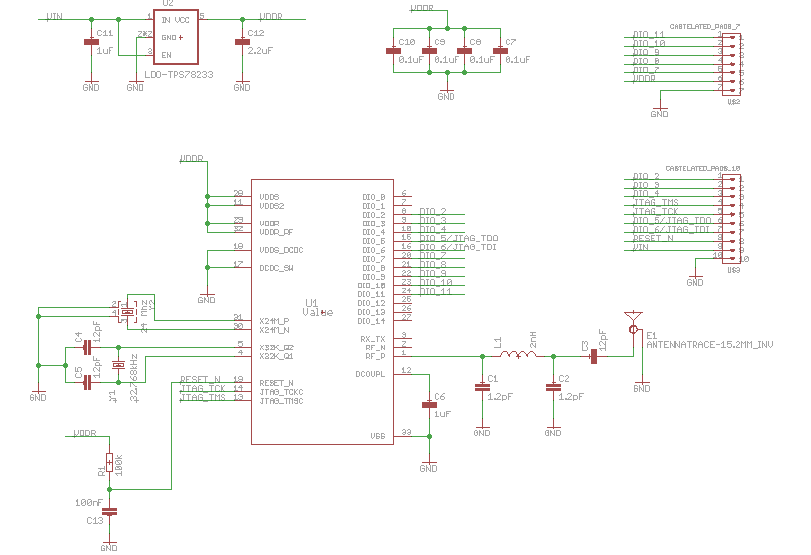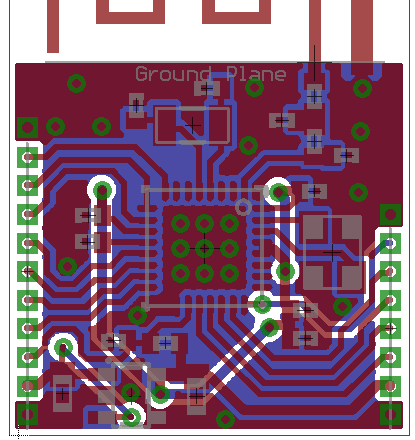I develop a PCB with the cc2640 (RHB) with single ended and internal bias antenna. For the power configuration i used external regulator because i need to power it from higher voltage than the cc2640 internal dc/dc can handle (>4.2 V).
For powering the cc2640 i'm using the TSP78218 with ultra low quiescent current: 500nA.
For the firmware i'm using then SimplePeripherial example. The PCB runs ok and the module advertises and i can connect to it. The problem is that every time i try to discover the services it fails.
To my surprise after some try and error i found that if i put some load on the 1.8 rail it works (like a led or a 1k resistor). I don't know what may be the problem, but i made 3 boards and one works as is, but the other 2 needs the load.
it means that the TPS782 is failing?, that the change from the ultra low corrent when the cc2640 in idle mode to the relative high current in communication (discover the services) produces the fail? i tried putting a higher capacitor on the regulators output but it keeps failing. Also in the advertising mode it works fine and this mode also have the spikes of current of the advertising brust, so i don't know how to debug it.
Any clue about the problem?
i will buy some TPS706 to try diferent regulators, when they arraive i will put the results.
EDIT:
in link says:
"BLE Connection issues My device is advertising but fails to connect, what is wrong? This typically happens if the 32.768kHz crystal is not connected or fails to start up. When the device boots it starts up by using the internal 48MHz RC Oscillator / 1536 as source for the LF system clock, which is used for the RTC. This causes the RTC to tick at 31.25kHz instead of 32.768kHz. When trying to connect the device will consequently wake up too late for the connection event and a supervision timeout will occur. Add the 32.768kHz crystal and/or make sure the crystal is within the requirements in the CC2640 datasheet. The load capacitors must also be dimensioned correctly to get the crystal to oscillate at the right frequency."
But i can connect to the module, the problem starts when i try to discover the services (From an Android phone)





